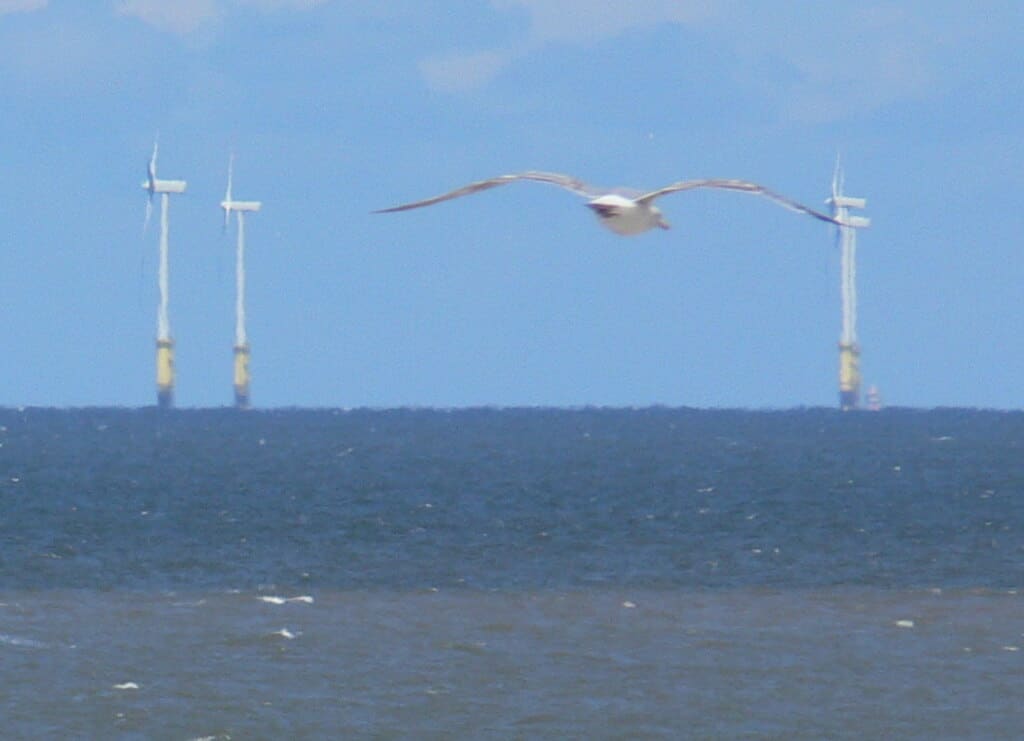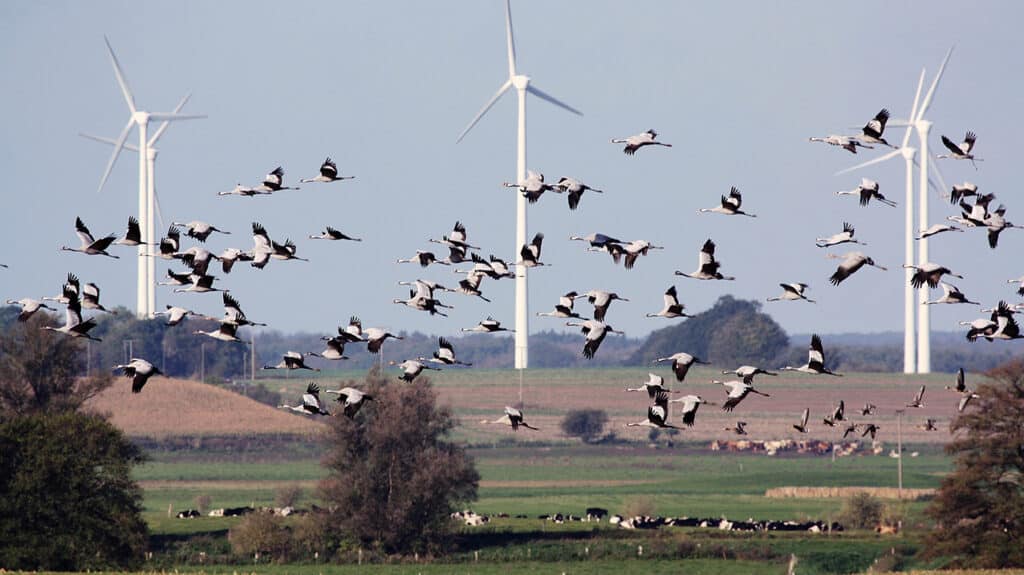An extensive EOWDC Bird Collision Avoidance Study by the Swedish energy company Vattenfall in collaboration with biologists is investigating the behavior of birds near wind turbines. Specifically, it was examined whether birds collide with the rotors of the wind turbines or whether they deliberately avoid the rotors. 115-page report was recently published that summarizes the findings of the last two years.

Vattenfall: The most comprehensive and technologically advanced study to date
The scientists involved used a variety of methods to observe the birds' behavior and collect accurate data. This included radar surveys using cameras on 11 wind turbines , bird counts and GPS tracking. This resulted in detailed 3D models of the flight patterns of thousands of birds near the wind farm. The study showed that most birds are very capable of avoiding wind turbine rotors, although there are some bird species that have difficulty doing so. Further research is needed for these bird species.
European Offshore Wind Deployment Center examined in the study is located approximately 3 km off the east coast of Aberdeenshire in the Scottish North Sea. The research focused on the flight behavior of four species of seabirds (herring gulls, northern gannets, kittiwakes and black-backed gulls) during the breeding and post-breeding seasons from April to October, when bird density is highest in the Aberdeen region. An exciting detail: In the two years of monitoring, not a single collision with the rotor blades or even a narrow escape was recorded on over 10,000 videos.
It has been claimed that very expensive solutions would be required to ensure that the birds avoid collisions (with the blades of wind turbines), but the species we have observed do a very good job of avoiding them. They appear to be very capable of surviving in a wind turbine environment.
Henrik Skov, the head of the project in a press release from Vattenfall
In detail, the results that the movement patterns of the birds near the rotor blades become similar from a distance of approx. 120 m and become more precise as they get closer to the rotors. There were also differences between the bird species observed. Herring gulls and kittiwakes were observed to evade horizontally at larger distances of 90 to 110 meters and 140 - 160 m, respectively, while common gulls and black-backed gulls only evaded 40 and 50 m in front of the rotor blade tips.
It is therefore argued that wind turbines only have a minimal impact on bird populations: which is important information for the future planning and development of wind farms. Robin Cox, project manager of the study at Vattenfall, emphasized that the prediction of collision risks in environmental impact assessments is subject to considerable uncertainty. However, the data from the study could help to predict collision risks more accurately and thus provide more realistic figures for estimating the effects of wind farms in the North Sea.
One problem: The Vattenfall study examines an offshore wind farm and seabirds. However, this report refers to an older Danish study that shows similar results at another location.

Precursor study in North Jutland
The study “ Klim Vindmøllepark, Monitering af fuglekollisioner ” (also conducted by Vattenfall) also concludes that wind turbines have no significant impact on the nesting or breeding grounds of birds. This was particularly important in this case because the wind farm examined in this case is located on land and directly next to the Natura 2000 Vejlerne nature reserve.
The white-fronted geese largely avoided the turbines by flying completely around the wind farm, while the cranes showed a high ability to fly between the turbines within the wind farm without colliding with them. This could be an explanation for the very low number of collision deaths found during searches under the turbines, despite large numbers of white-fronted geese and cranes in the area.
Excerpt from the Danish study
However, the Danish study also emphasizes that all types of energy production have an impact on the environment and that it is still necessary to study the effects of wind turbines on other animal species. Another way to protect birds is to use camera systems that ensure that individual wind turbines are shut down for a short time as soon as a bird flies into the danger area:
Technology against bird strikes: cameras in wind turbines instead of switching offFindings from both Vattenfall studies
The “EOWDC Bird Collision Avoidance Study” (offshore) and the Danish predecessor study (onshore) show that although most birds are able to avoid the rotors of wind turbines, there are also some bird species that have difficulty doing so. Overall, wind turbines only have a minimal impact on bird populations, which already provides important information for future planning and development of wind farms.
The results could help improve collision risk predictions and pave the way for renewable energy with simpler approval processes for offshore wind turbines.
Conclusion of the Frankfurter Rundschau
Different studies, different results
Futurezone writes on the subject that other studies (not mentioned in detail) come to different conclusions: “Birds that live near wind turbines [would] have 1.5 times higher mortality than those that don’t.” . However, the numbers in these studies vary considerably. Depending on the country and the study method, each wind turbine kills 1 to 7 birds per year. So no mass extinction. Wind turbines are not the biggest danger to birds, but rather glazed buildings and cats.
Sources: Vattenfall , Frankfurter Rundschau , kreiszeitung.de , futurezone
Cover photo: Aberdeen Offshore Wind Farm ( Vattenfall )
Fact checks on wind power:
Why wind farms are being shut down despite electricity shortages
Germany no longer burns natural gas to supply electricity to France
807 million for wind power that was not produced
No wind deaths due to wind power
Notes:
1) This content reflects the current state of affairs at the time of publication. The reproduction of individual images, screenshots, embeds or video sequences serves to discuss the topic. 2) Individual contributions were created through the use of machine assistance and were carefully checked by the Mimikama editorial team before publication. ( Reason )

